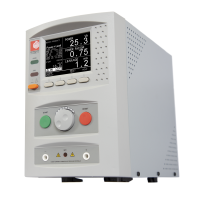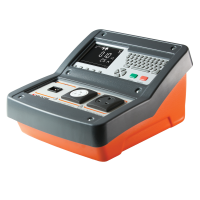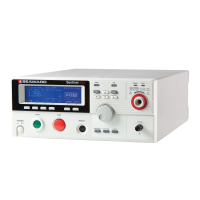Hipot Testers
Our hipot testers will help ensure your customer's electrical safety
We've been manufacturing hipot testers for over 75 years & have supplied many of the worlds leading manufacturers instruments with features that satisfy every type of requirement
Manufacturing Medical Equipment? We are here to help.
We have over 4 decades of experience in consulting and providing our expertise to the manufacturing sector. Our specialists can provide the insight required by manufacturers of medical equipment on best practices to ensure basic electrical safety and performance requirements are met.
What is Hipot Testing?
Hipot testing, in conjunction with earth bond testing (where applicable) form the core tests for electrical safety testing on a production line.
The hipot test, derived from the term High Potential Test, is a direct application of a high voltage to a unit under test. The test voltage is usually much higher than the usual operating voltage in order to stress the dielectric properties of the device under test.
The test is designed to detect that gaps or clearances between conductive parts and earth (or the product chassis) are sufficient and that degradation, such as pin holes, cracks in insulation and other protection devices have not resulted through production processes and or wear and tear, for example, a live conductor has not accidentally been crushed between the mating parts of the chassis, causing it to become live when switched on.
Breakdown in the insulation will result in current flowing across the test points of the Hipot tester, this current flow is commonly known as leakage. If this leakage current is too high the item under test is deemed to be unsafe and the test will fail.
Why carry out Hipot Testing?
The test is designed to ensure the safety of the product. In particular, legislation such as the LVD and issues of product liability, increase the need for manufacturers to illustrate due diligence.
Legislation such as the LVD, Machinery and Medical Directives demand that 100% of manufactured products are subjected to this test. In addition a number of independent and government product approvals agencies require that this test is performed, and that records are kept for each product design, and for each product manufactured. These organisations include:
- Underwriters Laboratories (UL)
- Canadian Standards Association (CSA)
- International Electrotechnical Commission (IEC)
- British Standards Institute (BSI)
- German Electrical Engineers Association (VDE)
- Technische Uberwachungs Verein (TUV)
- Japanese Standards Institute (JIS)
How do we carry out a Hipot Test?
All Hipot Testers on the market will have a High Voltage terminal and a Return Terminal. The test is performed by applying a voltage, usually greater than 1000V to the line conductors of the item under test (usually Live and Neutral).
The High Voltage terminal connected to the line conductors and the Return Terminal, usually connected to the Chassis of the product, or the Earth Conductor. The test voltage is applied and the current flowing across the conductors is measured, providing this level of current is low enough not to pose a hazard, the test will complete and the item under test will be deemed safe.
To save time it is normal that the live and neutral conductors are strapped together during this test, rather than testing each one individually against the ground.
Or tell us what you're looking for
I'd like to talk to a sales advisor





















Sign up to our Newsletter.
Stay up to date with the latest industry and product news, as well as our free educational content such as webinars and our expert guides.
Close